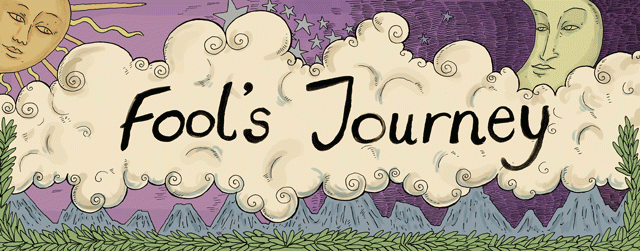
Most people who have spent more than five minutes studying tarot will be familiar with the name Barbara Moore. Whether that’s via her own decks (The Steampunk Tarot being her most well-known around these parts), through one of the many guidebooks she has written to other popular tarots or from picking up one of her other tarot books, it’s hard to be a modern tarot lover and not have bumped into Barbara somewhere along the way.
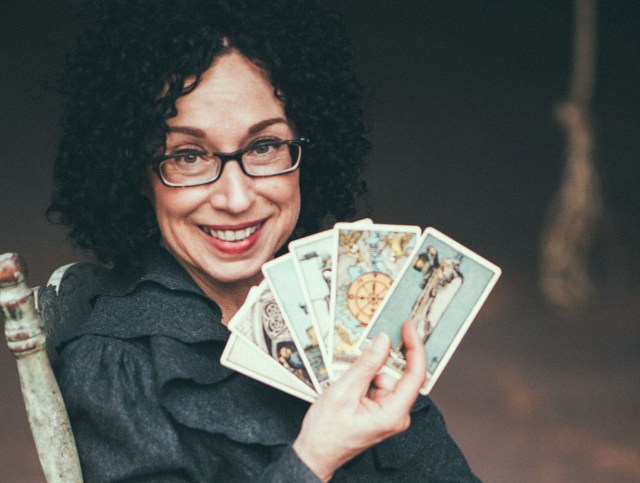
I first came across her when I bought my second tarot deck — the Shadowscapes Tarot, by Stephanie Piu-Mun Law. It came with a full-sized guidebook, with lengthy, intelligent descriptions of the cards and their meanings. This was a formative moment for me — reading this book (and using the deck) was the first time I really realised that tarot was mine to interpret however I wished.
Barbara is a force of nature in the tarot community, always able to provide a fresh and interesting perspective on cards, interpretations and uses. I was lucky enough to attend her workshop at the Northwest Tarot Symposium in Portland back in March, and she was as engaging, warm and informative as she is in writing, presenting a really interesting new take on the archetypal ‘fool’s journey’ which, once again, made me think about my now-familiar cards in a whole new way.
So imagine my excitement when she said yes to an interview for our Fool’s Journey! Here, Barbara tells us about how she got started with tarot (pre-internet, y’all), how tarot informed her thinking about psychology and gender, and her upcoming course and retreat.
Let’s begin at the beginning. You describe on your website how “at a party once, someone put a deck of cards in your hands, and you’ve held on tight ever since.” I love that image! Can you describe that first experience with tarot, and what it was about the cards that convinced you this was something worth holding onto?
I started college as an older student (28… just in time for my Saturn return), freshly divorced, and had just left my fundamentalist Christian church. This was in the late 1980s and interdisciplinary studies were all the rage and so I was totally into blending history (social, political, and cultural), psychology, comparative mythology, and modern physics with whatever else struck my fancy.
I’d been in college a few years and fully immersed in this mindset when my roommate and I threw a party. At some point, she pulled out a deck of tarot cards (I didn’t know it at the time, but it was a Rider-Waite-Smith) and everyone was kind of afraid to do anything with them. When the deck came to me, I recognized some of the medieval/renaissance images and symbolism. As a history major, with a concentration on that time period, I was intrigued. As a mythology/psychology student, I knew there was more here than just a deck of cards. I knew that I was holding a miniature version of my entire education in my hands. I also knew it was just the first step through a door to vast worlds. And so I stepped over the threshold. I was not disappointed and never looked back.
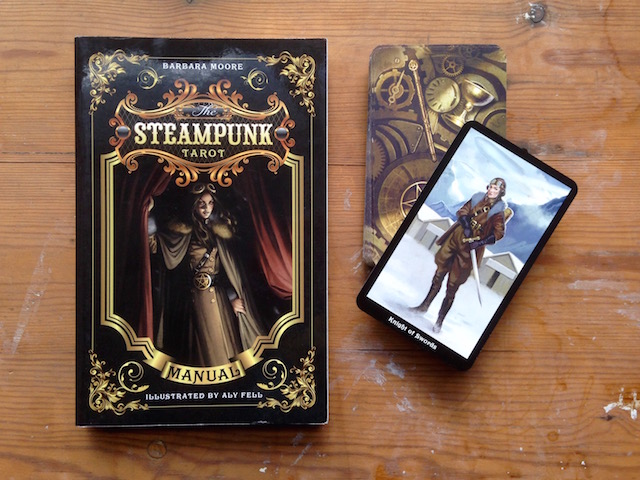
Can you tell us about your early days with tarot? And what books or tools did you use to get started?
My early learning/exploring days were before the internet was a thing, so I had no online sources back then. The bookstore was my main source of information and did devour whatever was available. I bought the few books that were on the shelves, which I don’t even remember them and I wasn’t impressed anyhow. Then I found Jung and Tarot by Sallie Nichols, 78 Degrees of Wisdom by Rachel Pollack and these are the books that formed my foundation. It boggles my mind that my first deck was the Haindl Tarot. When I look at it today, I have no idea how I read with it, but I did.
I had a friend, not the roommate, who explored with me, so we spent hours playing with different decks (by this time I had several…there weren’t as many available as there are now). My sister also was a fellow explorer, too. So I had this very small circle and finite resources, as tarot had not really burst into the large, popular subject that it is today.
This went on for some years. Then my second husband and I moved to Minnesota because of his work and I got at job at Llewellyn, which opened up the world of tarot even more. I discovered the American Tarot Association and went through their certification program… all via snail mail and cassette recordings! Oh, how I wish I saved the correspondence between me and my mentor.
I don’t really remember when I started reading professionally, to be honest. I read for whoever, whenever. I was fearless in those days! But the more I learned, about tarot and about life, the more cautious I became, feeling the sense of responsibility reading the cards brought. People came to me looking for truth and guidance and I wondered if I was good enough to provide it. I struggled a long time and still do.
I left full time employment in 2010 and started reading and teaching professionally in earnest, although I’d been reading and teaching already for a long time, well, for about 20 years already.
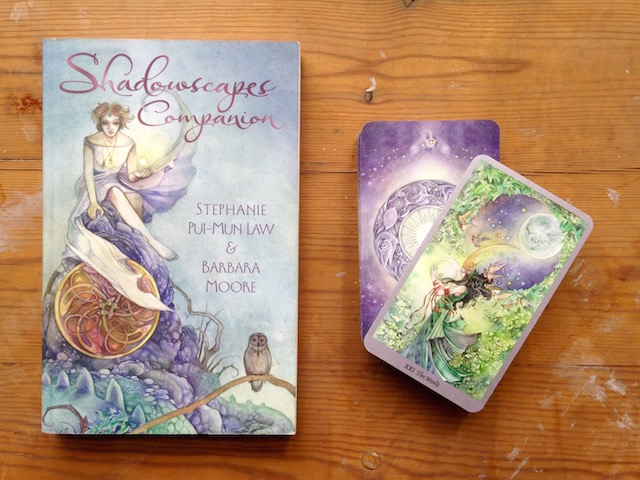
How does tarot intersect with your identity as an LGBTQ woman? For example, did tarot have any part in your coming out story or significant relationships? What kind of a role has it played in your love life?
What a great and challenging question. It is particularly challenging to me because I am not sure how I identify. I was married to men twice and only dated men. I don’t remember being attracted to women sexually. Until Lisa. I don’t think it mattered to me what her gender was, I just loved her, loved being with her, loved who I was with her. If she died, I’m not sure what direction I would go in. Oh, and I do know how that sounds, “gender doesn’t matter to me.” Kind of pompous, like, oh, I’m so evolved that I’m beyond gender. But all I know is that I love her. I’m attracted to her. In spite of or because of her gender, I really don’t know. And I don’t care. Knowing that answer wouldn’t really change anything.
Interestingly, more and more these days, I’ve been faced with having to check a box on a form asking how I identify. Every time it happens, I freeze and don’t know what to do. I want to be honest but I don’t know what the right answer for me is. I usually end up checking queer, since that seems the most undefined and closest to true for me.
Tarot as a spiritual guide, rather than a divinatory tool, probably prepared me to be open to other possibilities and perhaps more importantly to consider my views of masculine and feminine as energies rather than genitalia. This is really easily apparent in the court cards, which have images of men and women on them. However, they are symbolic of male and female energy rather than physical gender.
Also, one of the big themes in tarot is the balancing of opposites, again that idea of male and female energy. Yin and yang. The idea of balance is so complicated, nuanced, and subtle. It is not always simply a matter of equal parts this and that. Learning this also opened me up to possibilities, such as finding love with Lisa rather than a man.
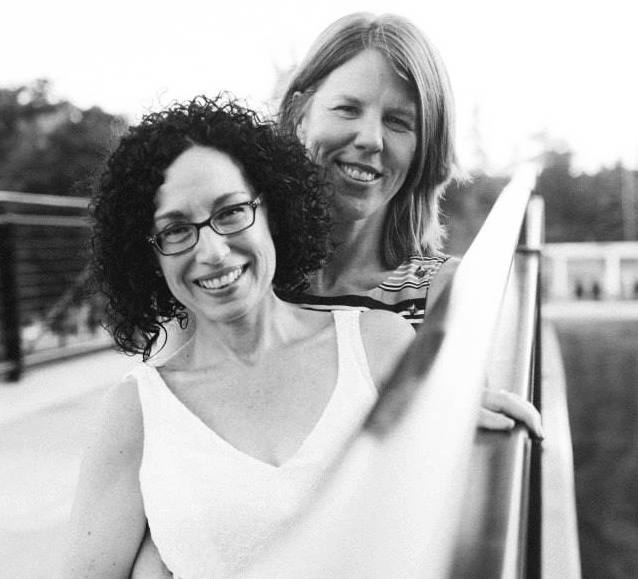
I personally find that tarot is an amazing tool for LGBTQ folks because it can help to define experiences you don’t always see reflected around you, and thus it provides that language we’re not always given. I also love ‘queering’ my cards by looking for LGBTQ-specific interpretations (for example, reclaiming the Ten of Cups and discussing the idea of chosen family and ‘coming home’ where the family and home you were born with may be a long way from what we often see on this card.) Are there any LGBTQ-specific ways in which you think tarot can be used?
This issue of LGBTQ experiences not being represented in mainstream culture is interesting to me. My wife, Lisa, mentions this a lot and says how certain movies in her childhood were so important because there were so few that showed people that she considered like her. She knew she was gay as a child. I still don’t know if I am, or what I am, as I mentioned. Perhaps because it is because I’ve always seen life as symbolic, I didn’t notice that there was “us” and “them” or whatever.
I love your idea for the Ten of Cups. That is a really valuable way to express that card’s energy. I think, though, that it applies to anyone, LGBTQ or straight or asexual, so for me that is not an exclusively LGBTQ issue. You and your readers may not think I’m so awesome after this, but I think in terms love and relationships and tarot, we’re all people with similar needs and unique needs, similar hurts and baggage and unique hurts and baggage. I don’t read for people differently if I know their identification or orientation. I think tarot is great for every human because it does exactly as you said, defines experiences you don’t always see reflected around you. Our society and the people in it are so wounded, so broken… hardly anyone is seeing healthy models for living. Healthy is healthy, whether LGBTQ or otherwise.
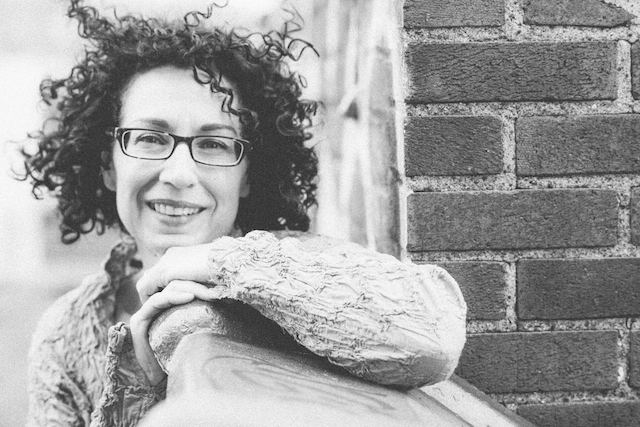
Do you use your cards with your partner now?
We’ve been together for about 15 years now and we don’t so much use the physical cards, but we refer to them and thus they are a shared language that helps us communicate. We do, however, read for each other sometimes. Not in-depth readings, but usually one card pulls about a specific question. This is mostly something I just do with Lisa, the one card reads. For clients or for myself, I always have more cards on the table. Lisa says she’s not a reader, but she is very, very good at it.
What was the moment when you decided this was something you wanted to do professionally, and how did you get started?
It was very organic, really. I was hired as a production assistant at Llewellyn and worked my way up to acquisitions editor, which gave me opportunities to attend conferences and get involved with the tarot community. Although it is a long story and not very interesting, it was through my work there that I was asked to write my first book. It was not a great experience and I didn’t do it again for a long time. Then I jumped back in and things went better. However, life in a cubicle and the office politics got to me. There was a moment that I knew I had to leave, that there wasn’t a question in my mind.
I saved up enough money to support me for a few months, plus I had royalties to help, and then I left the world of stable full-time employment. Llewellyn asked me to continue acquiring their tarot line as an independent contractor, and I accepted the offer, so that helps.
But I loved doing readings and wanted that to be part of my income. I set up my website and was also reading at a local metaphysical shop. During that first year of hundreds of readings, I learned what I liked and didn’t like and adjusted my services accordingly and quit reading at the shop. I don’t think there was a moment when I knew. By then, it was something I’d done for so long, was such a part of who I am and how I think about the world, that it seemed natural.
Teaching has always been my favorite thing, though, even as a kid I loved to “play teacher” and made my younger sisters always be the students. In college, I paid my way in part through tutoring. Being invited to conferences to teach was wonderful, although it didn’t really generate income, so I had to figure that out.

The thing I hear most often when people find out I’m a tarot reader is “but do you actually believe in it?” which is kinda hilarious, since the implication is that I’m either a weirdo or a con artist. What response do you get most often, and how do you respond?
Yes, I hear that, too. Mostly when we are out and being social with people we don’t know at all or when we strike up conversations when traveling. The implication is rather insulting, but these people don’t know me and they’ve probably met weirdos and cons. I explain that tarot is a framework and that how the cards are used differs from person to person based on their beliefs. If someone doesn’t believe the future is set in stone they wouldn’t read predictively. I try to really get across the idea that if they ever go to a reader, they should find out what that reader believes. Not that you can only read for people who share all the same beliefs, but a fundamental one like “can you predict the future” seems really key. I also stress that not all readers are the same. Tarot is not an absolute, nailed down thing. It is a mirror.
At least that’s how I used to approach those situations. Now as I’m getting older and far less serious, I am more apt to say “yes, I believe in all this stuff because it is way more fun and interesting” and leave it at that. I am more interested in enjoying my life and engaging with the world as I want rather than trying to convince others to share my views. I was but am no longer an evangelist like that.
You’ve lately developed some exciting new areas of your tarot business — a retreat, a year-long course, it all sounds amazing! Can you tell us about that?
Yes, yes, yes! I mentioned before how I was shifting my work, less readings, more teaching. I thought about how I learn and how I best express ideas, which is through writing. This was an important breakthrough because I spend a year researching different online possibilities with webinars and such, which are quite popular but never seemed to fit me. I realized that the students who would most enjoy my style of teaching are ones who love to read, are self-directed, and enjoy homework. I know that narrows down the potential audience, but that’s okay. The One-Year Novice Program is a correspondence course that begins in September. Each month, students get a lesson and lots of homework. The lessons are more like guides to help them develop their own system. At the end of the program, they will have written a book that reflects their own beliefs and practices developed over that year. The real value in the class will be, in my opinion, my feedback on their homework. It will be very personalized and push them to their edges!
The ‘Through the Looking Glass’ retreat is also based on something I would like to attend myself. It also realizes a drive I’ve had for a while but haven’t expressed: creating an environment where what needs to be said is said and what needs to be heard is heard, where transformation can take place, with the goal of helping people identify stories that they tell themselves that are no longer (or perhaps never were) true, stories that are not in line with their values and not serving their soul’s purpose. They will also create a ritual that they will do on the Winter Solstice and include follow up support from me the week before the ritual and the two weeks after the ritual. This is very important to me because a lot of people don’t realize that a ritual just begins the work and the 2 – 6 weeks that follows can be really hard. The ritual doesn’t do the work for them, it only initiates the work. It’s going to be intense and fun. As of this writing, there are still three spots left!
Lastly, what’s your favourite card, and why? (I know, awful question, but I have to ask!)
This really is a hard question. For so many years, my favorite card was the Hermit and I still love it (it is one of my birth cards). I really love the strong, determined, independent spirit of the Llewellyn’s Classic Tarot Hermit. Lately, on a more intellectual level, I have been loving Strength because for me that is the card of shadow work and I’ve been doing a lot of studying about that. I think shadow work is really important. One of my teachers said that it was his opinion that all the evil in the world is perpetuated by people who have not done their shadow work. I adore this loving relationship between shadow and self in the Tarot of the Magical Forest’s Strength card.

If I’m being honest, my current favorite is the High Priestess. This may seem like a cliché, however, it isn’t when you learn that until the last year or so, I hated this card with the heat of a thousand suns. And that was because I had not done my own shadow work. For so many years this card represented exclusion and not being allowed to know things, of being ignored and locked out of the Divine’s presence. Through a lot of deep and sometimes painful work, the High Priestess has become me finally connecting with a part of myself that had been denigrated, shamed, and locked into a closet. Now the High Priestess represents owning and loving my unique power and purpose… and accepting my own connection with the Divine, and perhaps more importantly, accepting the Divine’s love for and desire to connect with me. The High Priestess from the Steampunk Tarot is one of my favorites, in part because it’s a bit irreverent, and I’m learning that spiritual doesn’t always mean serious!
Now that I’ve done my High Priestess work, I’m starting to fall in love with Judgement, which I see as the card of following one’s true calling or living one’s soul’s purpose. The Judgement card from the Fey Tarot is one of my favorites.
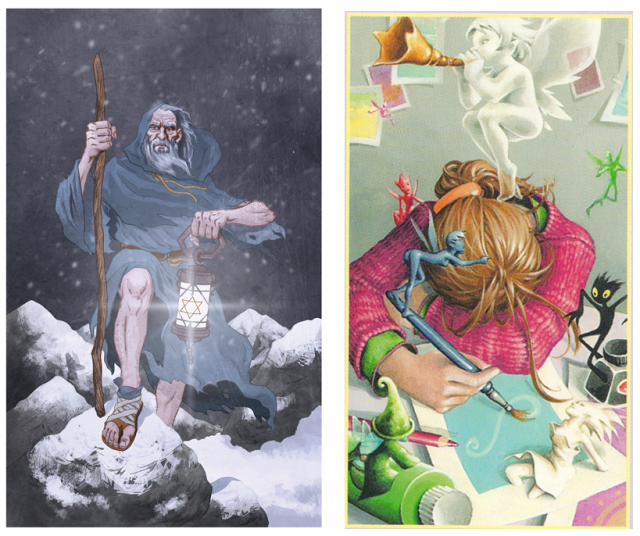
Barbara Moore lives in St. Paul, Minnesota with her wife Lisa and their two dogs, Whiskey and Norman. She loves cake, art supplies, summer, traveling, and playing Magic: The Gathering — a few of the things that convince Barbara that the Divine loves us and wants us to be happy.
Since her wife won’t be her sugar momma, to earn her keep Barbara spends her days consulting for Llewellyn and Lo Scarabeo, creating decks, writing books, presenting at conferences, reading for clients, and teaching. She has published 18 tarot-themed books (and there are more on the way).
You can connect with Barbara on Facebook, or visit her website.







